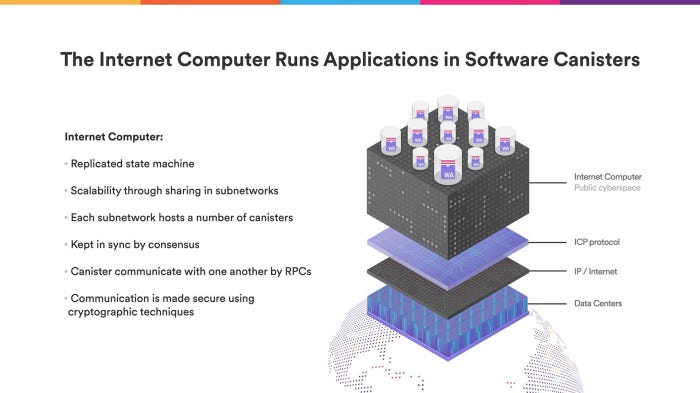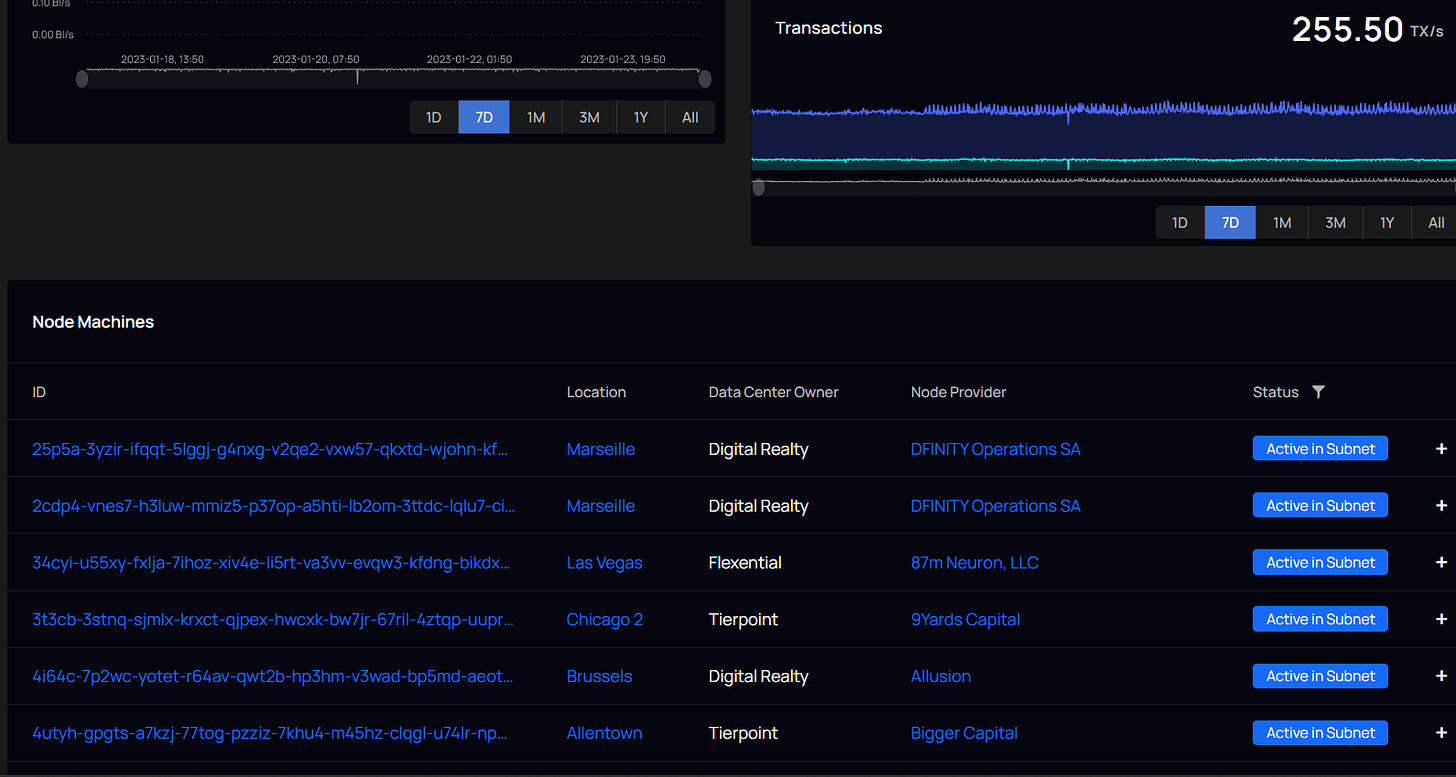Censorship Plaguing World Computer
From an utopian dream to a dystopian nightmare, How platform risk is still prevalent on Blockchain Computer
Lately, my sentiment on the ICP blockchain when tweeting has been mostly negative. Do I feel good about it? No.
Its hard for readers out of context to understand what really is happening, but what amuses me even more is the deafening silence from Early adopters and insiders of the ICP ecosystem on this issue.
a thing or two about me,
I’m an undergrad medical drop-out who went all-in on crypto. I started working on Blockchain for building softwares that can improve the IT systems in Healthcare Industry, but discovered Internet Computer along the way.
The tech blew my mind.
Despite the broken tokenomics, there was hope for a decentralized tokenized internet on the blockchain.
This tech is Blockchain Computer on Steroids and Angel Dust.
ICP’s innovation Chain Key cryptography propels the blockchain’s ability to create and maintain Subnets (individual interoperable chains) by assembling Node Hardware machines for on-demand scaling, among other things, there by allowing the network to scale without bounds.
The Internet Computer is powered by Chain Key Cryptography which enables any artifact certified by any smart contract running on any subnet blockchain to be verified using a single 48-byte public key for the whole Internet Computer. This is in contrast to traditional blockchains, where the entire blockchain from Genesis is needed to verify the current state of affairs.
- ICWikia
It removes the limitations previously suffered by smart contracts deployed on traditional monolithic chains.
ICP’s version of smart contracts, called canisters are an on-chain container bundle of WASM bytecode and persistent memory pages, deployed on-chain compiling into WASM module instances.
The point is, Canisters are millions of times more efficient than traditional smart contracts in terms of computing and processing data as smart contract txn on a Blockchain.
To get there, ICP sacrifices decentralization and therefore its security for enabling hyper efficient internet-scale smart contract computations.
While the technology behind ICP is truly impressive, there are also concerns about its decentralization and security.
The point of this article is to shed light on these issues partially owing to the lack of transparency and decentralization in the network.
So, How does it Sacrifice Decentralization?
First thing to Know about ICP is that its an incredibly complex blockchain engineered and maintained by more than 200 PhD Computer Scientists at DFINITY.
So before diving deeper, I’ll condense some information into points
DFINITY - Largest Contributor and Creator of ICP, has major influence on the Network
Cannot Host Nodes without going through NNS
Node hardware Spec - standardized and data center grade requirements.
Network Nervous System (NNS) [the on-chain governance], Tokenomics and Liquid Democracy create permissioned environment
Largest and the Only Contributor Dictates the Network
DFINITY - claims to be a non-profit organization, and has been the creator and the major ‘contributor’ ( as it likes to call itself ) of this blockchain. To put things in perspective, if DFINITY were to vanish overnight, there are no bug-fixers, developers, and overseer’s of network.
Network may as well crash without DFINITY being there to monitor and maintain it. Therefore, the builders and community members need to place a lot of trust on DFINITY to be a good actor and not abuse its powers.
There are few examples of DFINITY abusing its power which I will discuss in the NNS section.
DFINITY, being the largest influencer of ICP, only promotes the project in which it has vested interest.
You can basically scroll and find that DFINITY Twitter only promotes its employees or the dapps that it has vested interests with such as Entrepot and other dapps leveraging Entrepot NFT marketplace.
In fact, out of 50 recent tweets I went through, more than 30 were promoting DFINITY's vested interests, while there were nearly zero tweets promoting the community builders and truly innovative projects that have been active since the beginning of the network.
Why ask PR from the Foundation? Oh, I don’t know, maybe because they botched the launch so badly that it caused a media blackout on ICP, leading to a terrible reputation in Web3 space?
Also yes, I know how SBF manipulated the price of ICP days before its launch, just to short retail using his Alameda <> FTX cartel. But bros, why did DFINITY not provide more accessible information about vesting schedule?
Reminder that ICP NFT ecosystem has crossed 2 million #ICP in NFT volume traded, but there is still no self mint feature. You have to submit a “form” on Entrepot marketplace, which will be ‘reviewed’ by the team, and you will be allowed access to mint NFTs, which will be deployed as Canisters, whose keys will be owned by Entrepot.
Those who can control the canister smart contract can literally make any changes to the smart contract, including deleting them. So… yeah, lot of this is trustmebro.exe
NNS is the Heart and Soul of the Internet Computer Protocol
Network Nervous System is the ‘open’ algorithmic on-chain governance system governing the Internet Computer Blockchain.
NNS controls and owns the entire protocol. It can
Create Subnets by assembling and adding Node Machines
Delete Subnets and Smart Contracts
Upgrade or modify tokenomics and any aspect of the protocol
Also stores the ledger for Subnets and ICP
The Internet Computer Protocol (ICP) implements management of its utility token (ticker "ICP") using a specialized canister, called the ledger canister. There is a single ledger canister which runs alongside other canisters on a special subnet of the Internet Computer - the NNS subnet. The ledger canister is a smart contract that holds accounts and transactions
This ‘Special Subnet’ is replicated across 40 different node machines hosted by known Data centers
The NNS is governed by the ICP token holders who vote on Proposals via the NNS DAO front-end.
It is a form of pure Liquid Democracy where token holders can vote on governance proposals by staking ICP and voting for earning voting rewards i.e. ICP token.
Staking on ICP is no joke, as it requires big commitment. Minimum duration of staking is 6 months and Max is 8 years.
The amount you stake and the longer you lock, higher will be the voting power. So, whales such as DFINITY and insiders, practically dictate the network governance. They even reject proposals put forward by the community without proper justification or a poor one.
Examples
DFINITY rejects a proposal citing - the proposal did not invoke significant coding changes
https://forum.dfinity.org/t/dfinity-foundation-s-vote-on-governance-proposal-96475/17398
and when a community member asks why they rejected at the last minute, this is the reply given by the dfinity team
What’s more interesting is that, there were many other proposals earlier that were voted Yes by the Foundation but they did not invoke any code changes
So far, dfinity has almost always voted yes on ICPMN’s proposals, an organization with which they are very close with.
This gives both of them leverage to spin and control their narratives to snowball their influence even further, to the point that it impacts the developer environment and user experience in the ecosystem.
One could keep digging by obsessing about ICP, but it does not feel right to ignore the red flags any longer. I did invest heavily in ICP with my $ and my Time.
And I do want this blockchain to succeed and free the Internet from the clutches of Big Tech.
The Metaverse needs a decentralized infrastructure, and ICP is the only blockchain right now capable of providing one.
But a Metaverse where shadowy figures control the network and the narratives does not seem like a promising future to me.









